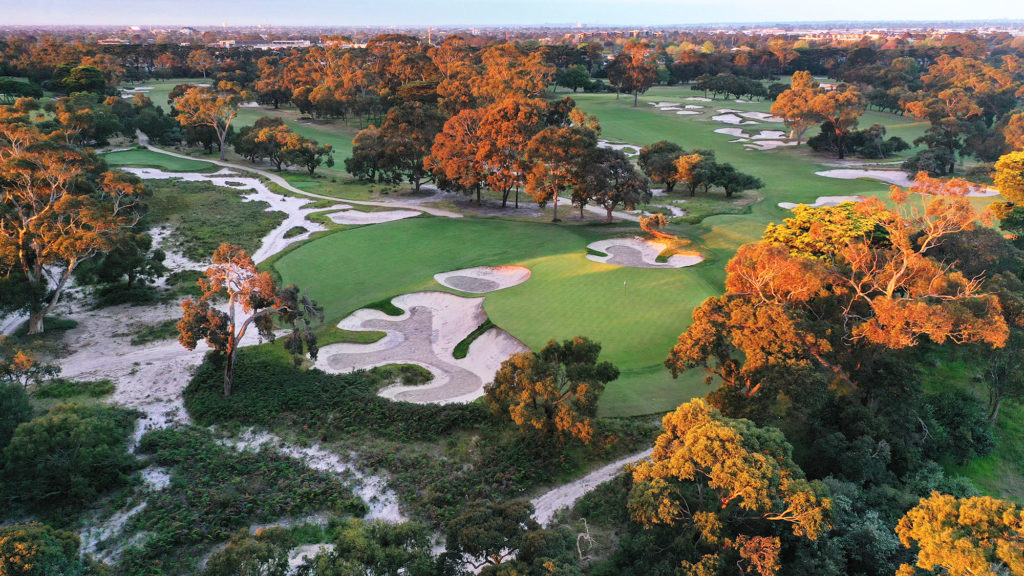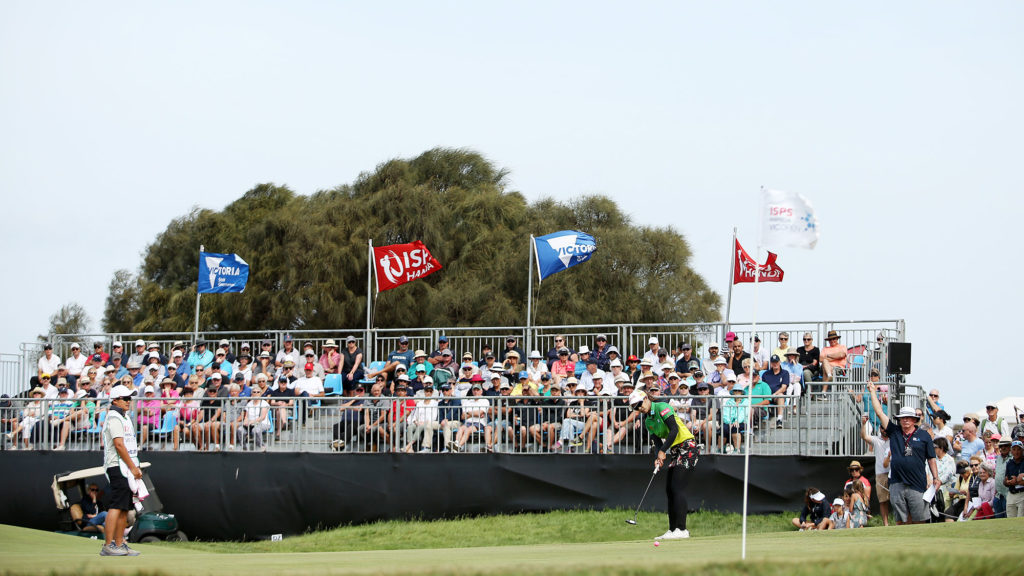It is one of golf’s most-asked questions, but in December we’ll find answers at Kingston Heath and Victoria golf clubs. By Steve Keipert. Photography by Gary Lisbon
A golf tournament on one of Melbourne’s revered Sandbelt courses is always a treat, but three championships played simultaneously across two of them represents a heightened layer of euphoria. We’re in for a show this December 1-4 when the ISPS Handa Australian Open descends on Victoria and Kingston Heath golf clubs, but such an occasion spawns the question: what does the Sandbelt possess that other venues don’t? What characteristics separate this collection of world-class courses from the rest? Are the tangible elements the key or is it more the aura and mystique of these most majestic venues?
The simple answer is: Sandbelt golf represents the best of both worlds. That’s the take of Geoff Ogilvy, a celebrated member of Victoria Golf Club, a Major champion, a course architect and one of the most cerebral golfers Australia has ever produced.
“If you put seaside British links golf and American parkland golf into a blender, the combination of them is better than each one of the ingredients,” he summarises before reflecting on the Sandbelt. “It’s got the ground game, but it’s got the incredible conditioning. It’s firm. The sand is unique. The greens right up to the bunker edge – and they’re really sharp, razor-edge bunkers. Great vegetation. A 12-month climate.
“To me, if you get a bit sick of green, soft, American golf and you get a little bit frustrated with the flukiness of British links golf, it’s somewhere in the middle. It’s incredibly unique and it’s the only place you’ll find it. There’s just nowhere else in the world like it. And there are five, six, seven, eight, nine, 10 examples in about a 10-mile square.”

Ogilvy is quick to give praise to the influence and input of Dr Alister MacKenzie – whose fingerprints are all over the Melbourne Sandbelt from an architectural standpoint – as well as those skilled craftsmen who followed the instructions left behind after the good doctor departed Australia. That the outcomes of such wisdom are still evident nearly a century later is part of the Sandbelt’s charm and long-standing appeal. It is also reflective, Ogilvy says, of a broader culture within Sandbelt golf clubs of not only preserving but enhancing their natural asset: “The Sandbelt’s got better and better and better over the years, just through having good custodians.”
Both host venues for this year’s Australian Open offer examples of how Sandbelt courses never sleep. Victoria, which until 2018 was the last Sandbelt course with many of its original greens still in place, renovated them and in doing so switched to the Pure Distinction strain of creeping bentgrass. The place has never looked better. Across at Kingston Heath, new tournament tees on five holes (which push the overall length beyond 6,600 metres) plus some strategic vegetation refinement will greet the Open fields. On top of that, the club will soon open a genius little short course.
Always preserving, frequently enhancing.

A HEALTHY COMPETITIVE SPIRIT
Among the most appealing aspects of golf on the Sandbelt is its mercurial nature. The change of seasons and simply the switch of tee markers and pins alter the challenge daily – and in the case of Melbourne’s capricious weather, sometimes even within the same day. Consider the 2004 Heineken Classic on Royal Melbourne’s venerable Composite course. Ernie Els, who was at the peak of his powers at the time, dismantled the grand dame of Australian golf by touring the layout in a mere 60 strokes in the opening round. Three days later, he required 42 blows just to navigate the front nine.
Such volatility is celebrated by members and frequent visitors to all Sandbelt clubs, however, for most golf fans who see these majestic layouts only during tournaments, these courses’ worth as competitive arenas dominate their desires. Yet once again, the Sandbelt rarely fails to deliver. Whether male, female, amateur or a combination of the three, Melbourne’s finest courses have a decorated history of cultivating spirited competition and generating results befitting the game’s history books.
At this first Australian Open to feature concurrent men’s and women’s championships, the pugnacious essence of the Sandbelt will be on show as two fleets of golfers who approach the game in different ways will still encounter the same challenges and obstacles, if in subtly different fashion.
“The Sandbelt, while it’s very difficult golf, it’s also golf that will help the girls show how it’s playable for them,” Ogilvy says. “You couldn’t do this at a men’s US Open course, for instance, because it’s just too long and a bit too soft. Whereas the Sandbelt runs a little bit and it’s a game that was created with the ground game involved. I think it’s going to translate really well to both.”
Care and precision will be required to get the intricacies of the setup just right for two fields – especially when it comes to pin positions [see page 34] – however the inherent traits of the Sandbelt will shine through regardless.
“The courses will be firm, it’ll be summer, there’ll be a bit of a breeze,” Ogilvy says. “You could probably put easy pins around a Sandbelt course for 72 holes and the scores wouldn’t be too low.”

FULLY ENGAGED
Ogilvy admits to feeling a sense of pride whenever an overseas player the calibre of Tiger Woods or Rory McIlroy rhapsodises about the Sandbelt. For him, as with many other Melbourne golfers, it enriches his love of the game, especially in that environment.
“I love what [the Sandbelt] does for golf and the golf it makes you play,” he says. “Because, at the end of the day, I love golf and the golf course is the place that you play the game that you love. I’m sure some people go just for the golf course and would rather walk around than to play. But for me, I’m a golfer, and golf is my No.1. The place you play is so important that it can steer your love or hatred for the game.
“The Sandbelt creates the most beautiful golf to play. They’re much more subtle margins. It’s like classical music versus pop music. It’s a very evolved version of the game and it’s a better version of the game. Guys like Rory and Tiger and those true golf tragics who are as much about the game of golf as they are the competition part, I think they love the game that it makes them play.”
Ogilvy cites the 2019 Presidents Cup, where playing-captain Woods led his American charges at Royal Melbourne in fascinating style by creating shots more than merely hitting shots.
“He was so engaged,” Ogilvy says. “You could see how engaged he was and how turned on he was by the challenge. And that Tiger is more fun to watch. Who doesn’t want to watch a Tiger or a Rory or an Adam Scott trying to play golf correctly, and be so engaged in the process?”
And right there is what Sandbelt golf does for the best exponents in the world. It’s an elevated arena, a place where the brain combines with the brawn to walk the tantalising tightrope between success and failure that is almost every golf shot. In every way, Sandbelt golf is the game at its best.




